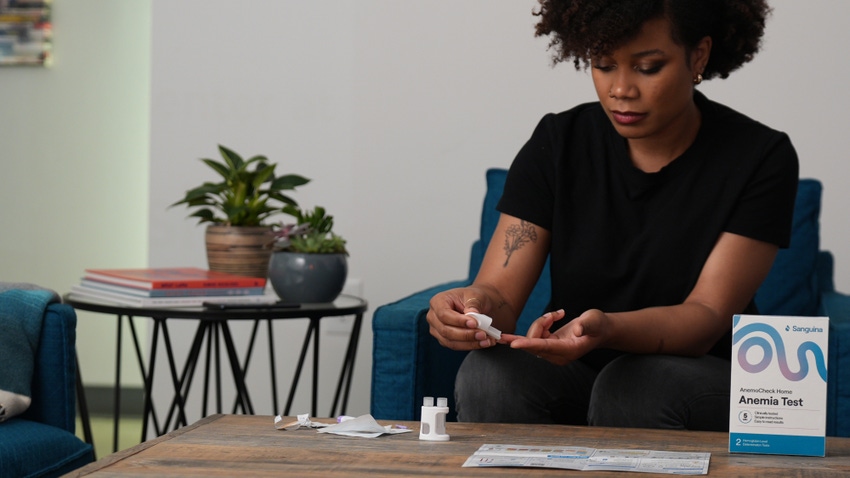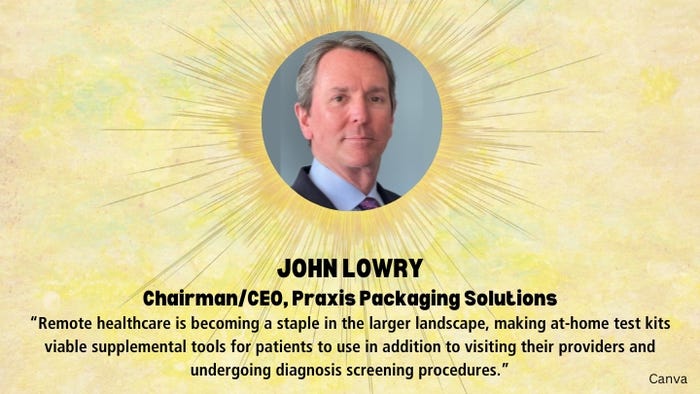Medical Test Kits Find a New Home
Patients appreciate the comfort, convenience, and confidentiality of testing and treating themselves where they live.

At a Glance
- At-home test kits expanded into other wellness areas, like disease screening, food allergy analysis, hormonal count, more
- At-home test kits are seen as more cost effective than in-person doctor visits and traditional healthcare services
- At-home test kits should be recognized as an incredible opportunity to deliver more accessible care to those in need
Many Americans have taken more control of their health and wellness, becoming comfortable making their own treatment decisions. Key to proper self-care, though, is getting correct information about their health — and understanding it — before acting on it.
That’s where medical testing kits come into play. We saw how valuable testing was during the COVID-19 pandemic. People were regularly testing themselves at home before safely venturing out in public.
This latest experience — along with decades of interest and discovery with genetic research through Ancestry.com and 23andMe — has given Americans a new level of confidence in prevention when it comes to their health.
How can packaging help enable the self-care and prevention trend? We talked with medical kitting expert John Lowry, Chairman and CEO of Praxis Packaging Solutions, a contract packager specializing in healthcare markets, for his insight.
What are the consumer trends driving the growth of at-home test kits?
Lowry: Following the global medical phenomenon of COVID-19, consumer trends have shifted toward more “self-focused” behaviors. In-person doctor visits are no longer assumed as the norm, with online telehealth becoming the more consistently available option. Consumers now often consider staying in one’s own home as a favorable alternative to going out for day-to-day activities, including for their medical needs and conveniences. Advanced technology continues to support the delivery of convenient solutions, enabling many people to substitute activities like in-person doctor visits or prescription pick-ups with virtual appointments or home delivery services.
In the packaging industry, this theme remains persistent and is in fact becoming more prominent. During COVID-19, millions of people across the country relied on at-home test kits to mitigate contagion and test themselves in the comfort of their own homes. As such, many consumers realized the reliability and convenience of these at-home kits and decided to use their benefits beyond the pandemic, making the “at-home” method a more vibrant opportunity for organic growth in the sector.
Why are at-home test kits expanding into other areas?
Lowry: Technological advancements have facilitated more effective collection methods for product offerings in the kitting sector. As a result, at-home test kits have been expanding into other areas like disease screening, food allergy analysis, hormonal count, urinary tract infection (UTI) testing, and more. A recent report from Data Bridge Market Research found that the global at-home test kit market was a $7.44 billion industry in 2023, and with the continued development of these product offerings, it is projected to grow to $11.95 billion by 2031.

Frida Fertility introduced a new line of simple at-home tests in May 2023 for couples who are ready to conceive. FRIDA FERTILITY
The COVID-19 pandemic established a rising preference among consumers to take tests in their own homes. Since then, the use of at-home test kits has become much more accepted and even favored in people’s day-to-day lives. As at-home testing becomes more normalized, consumers continue to work these kits into their routines and use them to address their health and medical needs. These kits are increasingly commonplace, and many people are also finding them to be cost-effective alternatives to in-person doctor visits and traditional healthcare services.
Upon personal use, consumers quickly identified the numerous benefits of at-home test kits went beyond pandemic-specific needs to address a wider breadth of product offerings. The demonstrated ease and comfort of the “at-home” method has led to increased attention for kits that were offered prior to COVID-19, like 23andMe and AncestryDNA.
As 2024 continues, this consumer preference for at-home products will likely persist and permeate into even more sectors, especially with the support of technological advancements driving a broader suite of product innovations.
What are the specific packaging challenges for this market niche? And how are those challenges being solved/addressed by medical test manufacturers?
Lowry: As more consumers look for at-home test kit alternatives, notable challenges facing the packaging industry include product traceability, supply chain management (including distribution and return collection), and the control and reporting of confidential information.
Millions of people are looking to at-home test kits as solutions to their health and wellness challenges. As such, firms like Praxis have been taking the necessary actions, including offering packaging and quality control solutions in-house, to ensure kits are fully traceable and logged correctly throughout the supply chain process.
Tracking, controlling and reporting patients’ confidential information requires the packaging industry to continuously implement advanced technologies that meet the needs of a changing environment.
Furthermore, packaging companies are now starting to invest more capital to build out and implement robust systems across all aspects of product manufacturing. These enhancements include quality, inventory, and process controls. Serial numbers, lot numbers, and expiration dates are also largely instrumental in this regard, offering a guaranteed method of addressing the overhaul of product delivery. These barcoding and track-and-trace technologies are similarly important to those required with prescription drugs.
As at-home test kits continue to garner more attention and demand, regulatory bodies will likely look to implement new guidelines ensuring all patients receive the care they need and, in turn, necessitate companies to further reshape and refine their systems to meet those requirements. In this heavily monitored FDA and cGMP environment, manufacturers are increasingly seeking out and using co-packers that offer such credentials and controls.
How will at-home test kits become more efficient and why will this open the door for other illness and/or ailment testing solutions?
Lowry: Progressing into 2024, at-home test kits will likely continue to be further refined. Remote healthcare is becoming a staple in the larger landscape, making at-home test kits viable supplemental tools for patients to use in addition to visiting their providers and undergoing diagnosis screening procedures.

As a result, companies are leaning on advanced technology to foster the expansion and development of collection devices to coincide with improving methodologies. Therefore, new screenings for a variety of illnesses and ailments are likely to become more readily available for patients across the country. As these new screenings become more readily available, company processes are likely to become more concrete and stabilized, opening the door for improved solutions for a greater breadth of testing procedures.
With patients’ preferences for at-home screenings persisting across the broader healthcare landscape, the growing access to at-home test kits should be recognized as an incredible opportunity to deliver more accessible care to those in need.
About the Author(s)
You May Also Like




